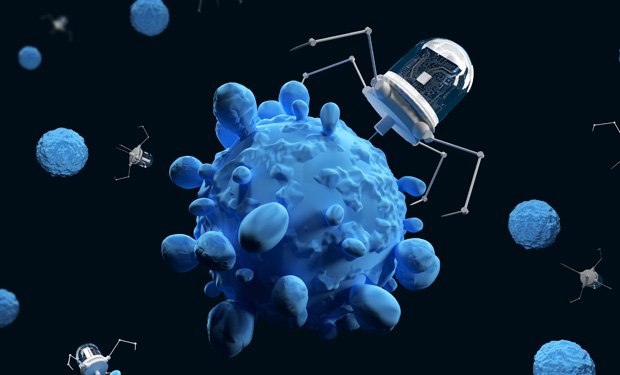Introduction
Nano-robotics, the design and deployment of microscopic robots, is transforming the boundaries of science, medicine, and industry. These tiny machines, often smaller than a human cell, are capable of performing precise tasks at the molecular and cellular level. From targeted drug delivery to industrial material assembly, nano-robots promise to revolutionize the way we approach healthcare, manufacturing, and environmental management.
By 2035, nano-robotics could redefine medical treatments, enhance industrial processes, and create technological capabilities that were once thought impossible. This article explores the science, applications, benefits, challenges, and future of nano-robotics.
The Science of Nano-Robotics
Nano-robots operate at scales measured in nanometers, a billionth of a meter, and are built using advanced materials, nanotechnology, and bioengineering principles. Some are constructed from synthetic materials, while others are biologically inspired or even composed of DNA and proteins. Control mechanisms often involve magnetic fields, chemical gradients, or external light sources, allowing precise navigation and function within complex environments.
This level of control enables nano-robots to interact with individual cells, molecules, and tissues, opening unprecedented possibilities in medicine and manufacturing. Their ability to operate at such a fine scale distinguishes them from conventional robotics and makes them uniquely suited to tasks that are otherwise impossible.
Applications in Medicine
Medicine is one of the most promising fields for nano-robotics. Nano-robots can deliver drugs directly to diseased cells, minimizing side effects and increasing treatment efficiency. They are being researched for cancer therapy, where they can target tumors with precision, release therapeutic agents, and even monitor treatment progress in real time.
Nano-robots also hold potential for minimally invasive surgeries, tissue repair, and monitoring of vital biological processes. By interacting with cells and molecules directly, these microscopic machines can detect diseases at their earliest stages and intervene before they become critical.
Industrial and Manufacturing Applications
Beyond medicine, nano-robots are transforming industrial processes. They can assemble materials at the nanoscale with extraordinary precision, enabling the creation of stronger, lighter, and more complex materials. In electronics, nano-robotic manufacturing can produce microchips and components with unprecedented density and efficiency.
Environmental applications also benefit from nano-robots, which can detect pollutants, neutralize toxins, or even repair materials at the molecular level. These capabilities can improve quality control, reduce waste, and enhance sustainability across various industries.
Benefits of Nano-Robotics
The benefits of nano-robotics are vast. In healthcare, they provide more effective and targeted treatments, reduce side effects, and enable early diagnosis. In industry, they increase precision, efficiency, and productivity while reducing waste and energy consumption. Environmental applications offer enhanced monitoring and remediation capabilities, contributing to sustainability.
Nano-robots also enable scientific research previously impossible, such as mapping cellular interactions, studying molecular processes in real time, and experimenting at the smallest scales of life and matter.
Challenges and Considerations
Despite their potential, nano-robots face significant technical and ethical challenges. Designing, controlling, and powering machines at the nanoscale is extremely complex. Ensuring biocompatibility, preventing unintended side effects, and managing long-term safety are major concerns in medical applications.
Regulatory frameworks for nano-robotics are still developing, and ethical questions arise regarding privacy, manipulation of biological systems, and the potential for misuse. Widespread adoption will require careful oversight, robust safety protocols, and public awareness of the technology’s implications.
The Future of Nano-Robotics
By 2035, nano-robotics is expected to be integrated into healthcare, industry, and environmental management on a broad scale. Medical nano-robots could perform routine monitoring, targeted therapy, and even cellular repairs within the human body. Industrial nano-robots will create smarter, more efficient manufacturing processes. Environmental nano-robots could continuously monitor ecosystems and address pollution in real time.
The combination of nano-robotics with AI, biotechnology, and quantum sensing will unlock new frontiers, making once-impossible tasks routine and opening pathways to innovations that will fundamentally change medicine, industry, and our understanding of the microscopic world.
Conclusion
Nano-robotics represents a leap forward in human capability, enabling precise intervention at the cellular and molecular level. From medicine and manufacturing to environmental monitoring, these tiny machines promise massive impacts on health, industry, and sustainability.
While challenges in technology, regulation, and ethics remain, the ongoing development of nano-robotics is poised to revolutionize multiple sectors. By 2035, these microscopic machines could transform the way we heal, build, and protect the world around us, demonstrating that even the tiniest technologies can have the largest impact.
